The Buddhist monk grabbed a young Muslim girl and put a knife to her neck.
“If you follow us, I’ll kill her,” the monk taunted police, according to a witness, as a Buddhist mob armed with machetes and swords chased nearly 100 Muslims in this city in central Myanmar.
It was Thursday, March 21. Within hours, up to 25 Muslims had been killed. The Buddhist mob dragged their bloodied bodies up a hill in a neighborhood called Mingalarzay Yone and set the corpses on fire. Some were found butchered in a reedy swamp. A Reuters cameraman saw the charred remains of two children, aged 10 or younger.
Ethnic hatred has been unleashed in Myanmar since 49 years of military rule ended in March 2011. And it is spreading, threatening the country’s historic democratic transition. Signs have emerged of ethnic cleansing, and of impunity for those inciting it.
Over four days, at least 43 people were killed in this dusty city of 100,000, just 80 miles north of the capital of Naypyitaw. Nearly 13,000 people, mostly Muslims, were driven from their homes and businesses. The bloodshed here was followed by Buddhist-led mob violence in at least 14 other villages in Myanmar’s central heartlands and put the Muslim minority on edge across one of Asia’s most ethnically diverse countries.
An examination of the riots, based on interviews with more than 30 witnesses, reveals the dawn massacre of 25 Muslims in Meikhtila was led by Buddhist monks—often held up as icons of democracy in Myanmar. The killings took place in plain view of police, with no intervention by the local or central government. Graffiti scrawled on one wall called for a “Muslim extermination.”
Unrest that ensued in other towns, just a few hours’ drive from the commercial capital of Yangon, was well-organized, abetted at times by police turning a blind eye. Even after the March 21 killings, the chief minister for the region did little to stop rioting that raged three more days. He effectively ceded control of the city to radical Buddhist monks who blocked fire trucks, intimidated rescue workers and led rampages that gutted whole neighborhoods.
Not all of the culprits were Buddhists. They may have started the riots, but the first man to die was a monk slain by Muslims.
Still, the Meikhtila massacre fits a pattern of Buddhist-organized violence and government inaction detailed by Reuters in western Myanmar last year. This time, the bloodshed struck a strategic city in the very heart of the country, raising questions over whether reformist President Thein Sein has full control over security forces as Myanmar undergoes its most dramatic changes since a coup in 1962.
In a majority-Buddhist country known as the “Golden Land” for its glittering pagodas, the unrest lays bare an often hidden truth: Monks have played a central role in anti-Muslim unrest over the past decade. Although 42 people have been arrested in connection to the violence, monks continue to preach a fast-growing Buddhist nationalist movement known as “969” that is fueling much of the trouble.
The examination also suggests motives that are as much economic as religious. In one of Asia’s poorest countries, the Muslims of Meikhtila and other parts of central Myanmar are generally more prosperous than their Buddhist neighbors. In Myanmar as a whole, Muslims account for 5 percent of the populace. In Meikhtila, they comprise a third. They own prime real estate, electronics shops, clothing outlets, restaurants and motorbike dealerships, earning conspicuously more than the city’s Buddhist majority, who toil mostly as laborers and street vendors.
As Myanmar, also known as Burma, emerges from nearly half a century of isolation and military misrule, powerful business interests are jockeying for position in one of Asia’s last frontier markets. The recent violence threatens to knock long-established Muslim communities out of that equation, stoking speculation the unrest is part of a bigger struggle for influence in reform-era Myanmar.
The failure of Nobel Peace Prize-winner Aung San Suu Kyi, now opposition leader in parliament, to defuse the tension further undermines her image as a unifying moral force. Suu Kyi, a devout Buddhist, has said little, beyond warning that the violence could spread if not dealt with by rule of law.
Suu Kyi declined to be interviewed for this story.
Gold Hair Clip
The spark was simple enough.
Aye Aye Naing, a 45-year-old Buddhist woman, wanted to make an offering of food to local monks. But she needed money, she recalled, sitting in her home in Pyon Kout village. At about 9 a.m. on March 20, a day before the massacre, she brought a gold hair clip to town. She had it appraised at 140,000 kyat ($160). With her husband and sister, she entered New Waint Sein, a Muslim-owned gold shop, which offered her 108,000 kyat. She wanted at least 110,000.
Shop workers studied the gold, but the clip came back damaged, she said. The shop owner, a young woman in her 20s, now offered just 50,000. The stout mother of five protested, calling the owner unreasonable. The owner slapped her, witnesses said. Aye Aye Naing’s husband shouted and was pulled outside, held down and beaten by three of the store’s staff, according to the couple and two witnesses.
Onlookers gathered. Police arrived, detaining Aye Aye Naing and the owner. The mostly Buddhist mob turned violent, hurling stones, shouting anti-Muslim slurs and breaking down the shop’s doors, according to several witnesses. No one was killed or injured, but the Muslim-owned building housing the gold shop and several others were nearly destroyed.
“This shop has a bad reputation in the neighborhood,” said Khin San, who says she watched the violence from her general store across the street. “They don’t let people park their cars in front. They are quarrelsome. They have some hatred from the crowd.”
That hatred had been further stoked by a leaflet signed by a group calling itself “Buddhists who feel helpless” and handed out a few weeks before. It suggested Muslims in Meikhtila were conspiring against Buddhists, assisted by money from Saudi Arabia, and holding shady meetings in mosques. It was addressed to the area’s monks.
Tensions escalated. By about 5:30 p.m., four Muslim men were waiting at an intersection. As a monk passed on the back of a motorbike, they attacked. One hit the driver with a sword, causing him to crash, witnesses said. A second blow sliced the back of the monk’s head. One of the men doused him in fuel and set him on fire, said Soe Thein, a mechanic who saw the attack. The monk died in hospital.
Soe Thein, a Buddhist, ran to the market. “A monk has been killed! A monk has been killed!” he cried. As he ran back, a mob followed and the riots began. Muslim homes and shops went up in flames.
Soe Thein identified the attackers by name and said he saw several in the village days after the monk was murdered. Police declined to say whether they were among 13 people arrested and under investigation related to the Meikhtila violence.
 Exposing ‘No Kings’: Billionaire-Funded Anti-Trump Machine Gears Up for June 14 Power Grab
Exposing ‘No Kings’: Billionaire-Funded Anti-Trump Machine Gears Up for June 14 Power Grab  Fight, Mishap or Warning? Elon Musk’s Black Eye Fuels Theories
Fight, Mishap or Warning? Elon Musk’s Black Eye Fuels Theories 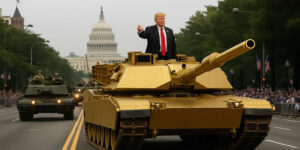 Trump Honors America With Military Parade While Leftist Protesters Lash Out
Trump Honors America With Military Parade While Leftist Protesters Lash Out 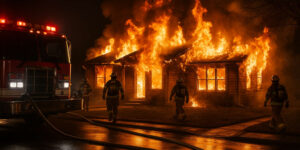 Miracle: Boy, 12, Saves Family from House Fire
Miracle: Boy, 12, Saves Family from House Fire  Huckabee Shocks with U.S. Policy Shift on Palestinian State
Huckabee Shocks with U.S. Policy Shift on Palestinian State 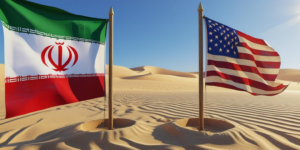 US Evacuates Diplomats as Iran Nuclear Talks Falter
US Evacuates Diplomats as Iran Nuclear Talks Falter  Jesus at the Drive-Thru: The Faith Behind America’s Happiest Restaurant Workers
Jesus at the Drive-Thru: The Faith Behind America’s Happiest Restaurant Workers 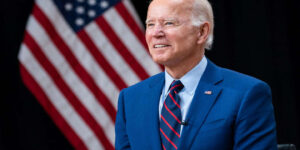 Biden Staffers Included in Health Cover-Up Probe
Biden Staffers Included in Health Cover-Up Probe 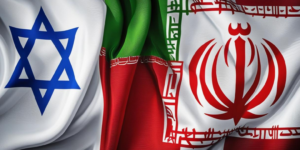 Is Israel About to Strike Iran? Here’s What We Know
Is Israel About to Strike Iran? Here’s What We Know  Veterans Clinic Forced to Close After ‘Violent Mobs’ Target ICE Agents in LA
Veterans Clinic Forced to Close After ‘Violent Mobs’ Target ICE Agents in LA